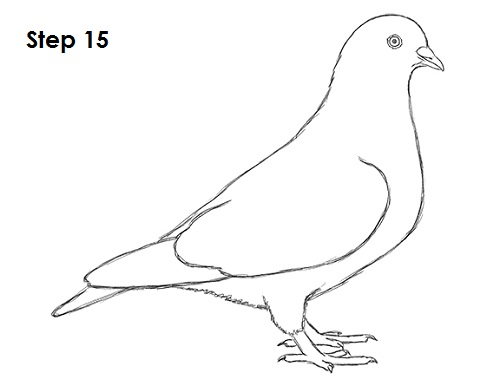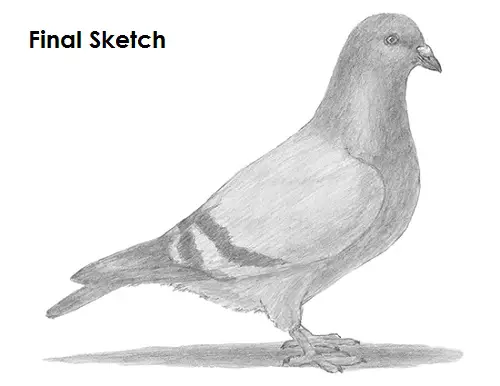Page 4 of 4


Add a cast shadow underneath. This helps ground the pigeon so it doesn't appear to be floating.
You can add more value throughout your pigeon drawing for more detail. You can also skip this step altogether for a while or albino dove. Wild or feral pigeons tend to be different shades of gray. Use different values all over the body to replicate their pattern. Use a very light value on the neck to represent the iridescent feathers. The main part of the bird's body is for the most part light gray, so don't push down too hard with your pencil when you add the value here. Pigeons come in a variety of patterns like speckles and spots, so feel free to shade yours however you'd like. The tips of the wings and tails are almost black, so use a very dark value here. It's always a good idea to use reference for a more accurate drawing. A lot of cities have feral populations of pigeons. If you live near some, go look at some for reference! Remember to pause the video after each step to draw at your own pace.
Thanks for watching! Subscribe to the How2DrawAnimals YouTube Channel for a new tutorial every Tuesday.
To learn how to draw popular cartoon characters, visit EasyDrawingTutorials.com.







